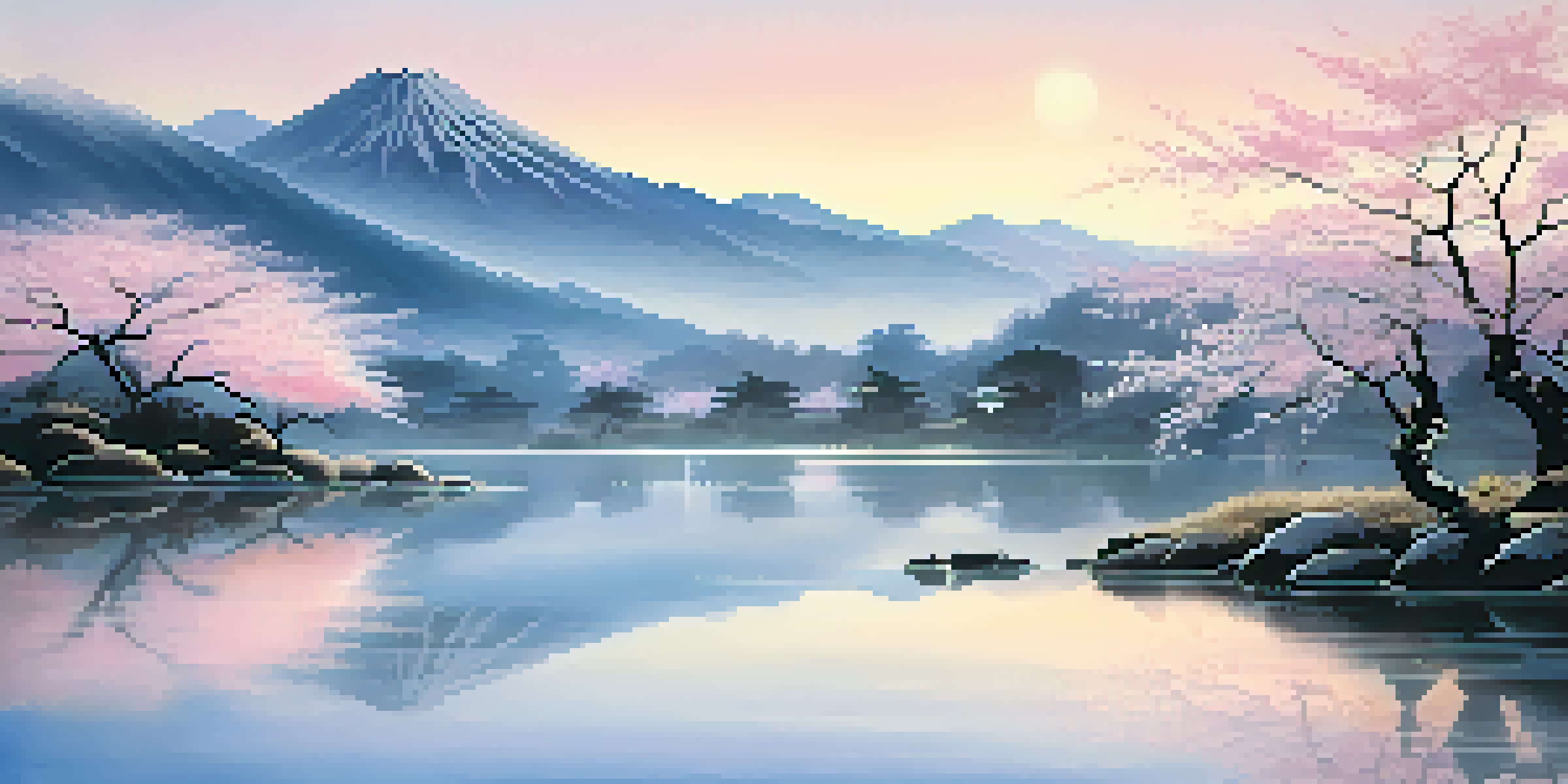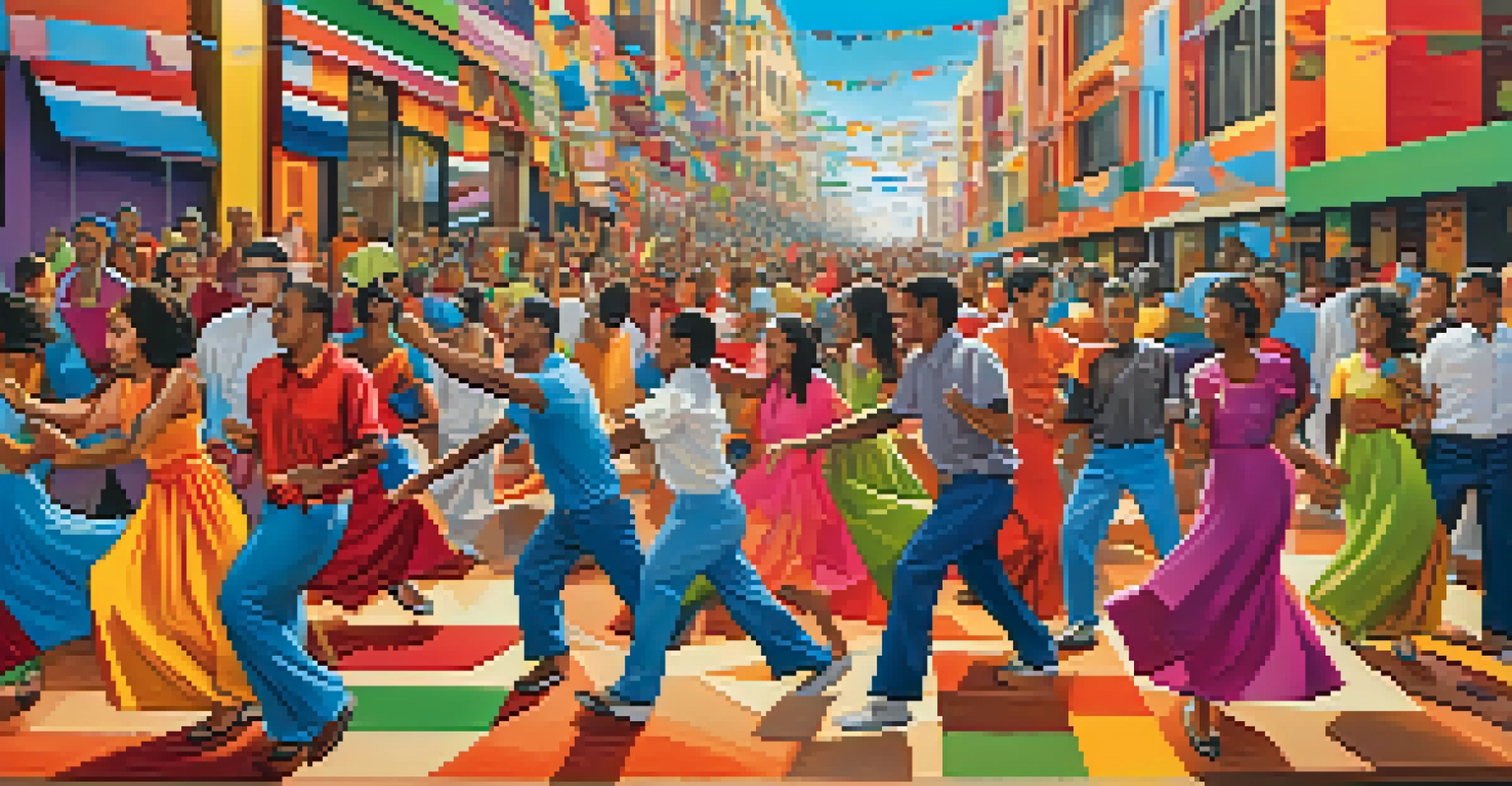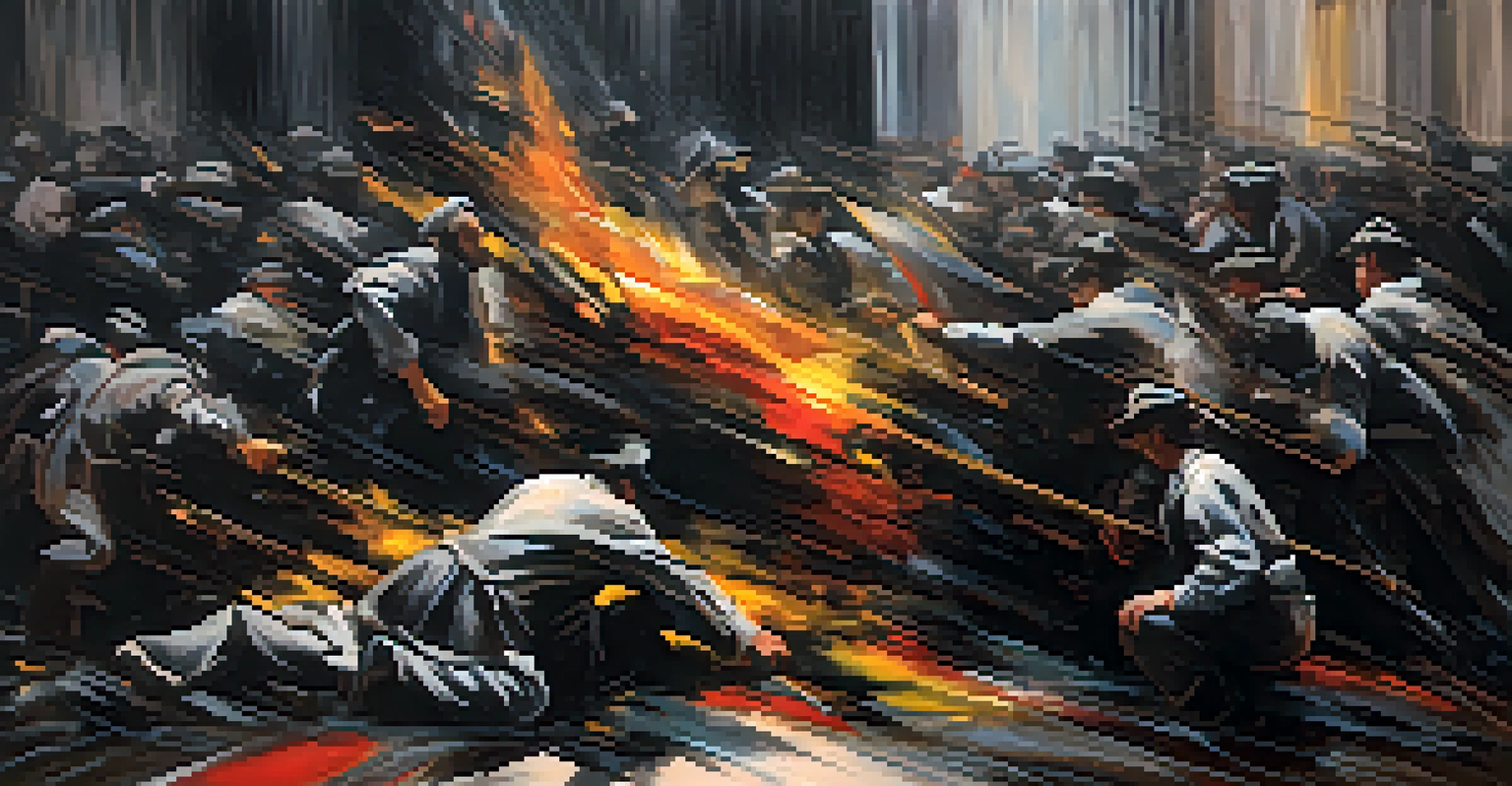Cultural Influences: Emotions in Art Across Different Societies

Understanding the Role of Emotions in Art
Art has long been a canvas for human emotions, allowing artists to express their feelings and experiences. Emotions in art can vary widely, reflecting the artist's personal experiences or the cultural backdrop of their society. For instance, a joyful celebration in one culture might be depicted with vibrant colors and lively scenes, while another culture may reflect joy through more subdued imagery, focusing on inner peace.
Art is the most beautiful of all lies.
Moreover, emotions serve as a bridge between the artist and the audience, inviting viewers to resonate with the feelings being portrayed. This emotional connection can evoke memories or provoke thoughts, making the experience of viewing art deeply personal. When we explore art from different societies, we can see how these emotional expressions are influenced by shared cultural narratives, traditions, and values.
Related Resource
Ultimately, understanding emotions in art enriches our appreciation of diverse cultures. By recognizing the emotional layers within artistic expressions, we engage with the stories and sentiments that shape different communities, fostering empathy and connection across cultural boundaries.
Cultural Variations in Emotional Expression
Different cultures have unique ways of expressing emotions through art, influenced by their histories, social norms, and values. For example, Western art often emphasizes individualism and personal expression, showcasing emotions in a direct and overt manner. In contrast, many East Asian cultures may prioritize harmony and restraint, leading to subtler depictions of feelings in their art.

This divergence not only shapes the visual language of art but also informs the way emotions are interpreted by viewers. In cultures where expressing strong emotions is seen as a social faux pas, artwork may convey complex feelings through symbolism or abstraction rather than explicit representation. This highlights how cultural context can significantly alter our understanding of emotional content in art.
Emotions Connect Artists and Audiences
Art serves as a bridge between artists and viewers, evoking personal memories and emotions through cultural narratives.
Through these cultural lenses, we can appreciate the richness and diversity of emotional expression. By exploring various artistic traditions, we not only expand our understanding of art but also gain insights into the values and beliefs that shape different societies.
The Impact of Historical Events on Emotional Art
Historical events often serve as catalysts for emotional expression in art, with artists reflecting societal experiences during times of upheaval or change. For instance, the trauma of war can lead to powerful expressions of grief and loss, as seen in works like Picasso's 'Guernica.' Such pieces resonate deeply, capturing collective emotions that arise from shared experiences.
Every artist dips his brush in his own soul, and paints his own nature into his pictures.
Similarly, periods of social or political change can inspire movements in art that channel feelings of hope, resistance, or renewal. For example, during the Civil Rights Movement in the United States, artists used their work to convey the struggles and aspirations of marginalized communities, creating art that was both emotionally charged and politically significant. This interplay between history and emotion showcases how art can serve as a reflection of societal sentiments.
Related Resource
By examining how historical events shape emotional expressions in art, we gain a deeper understanding of the contexts in which these works were created. This exploration not only enriches our appreciation of the art itself but also highlights the resilience and creativity of societies navigating through challenging times.
Religious and Spiritual Influences on Emotions in Art
Religion and spirituality have long played a pivotal role in shaping emotional expressions in art across cultures. Sacred art often conveys profound emotions tied to faith, devotion, and transcendence. For instance, the intricate designs of Islamic art may evoke feelings of peace and contemplation, reflecting the spiritual connection to the divine.
In contrast, Christian art frequently portrays narratives of suffering and redemption, allowing viewers to connect with the emotional journeys of figures like Christ and the saints. This emotional depth can resonate deeply, providing comfort or inspiration to believers and non-believers alike. The ability of religious art to evoke such strong emotions speaks to its power and significance in various cultures.
Cultural Context Shapes Emotional Art
Different cultures express emotions uniquely in art, influenced by their histories, values, and social norms.
By exploring the spiritual dimensions of art, we can uncover layers of emotion that speak to universal human experiences. Regardless of cultural background, the search for meaning and connection is a thread that binds us, making religious art a vital avenue for emotional exploration.
Nature and Emotions: A Universal Connection
Nature has always been a profound source of inspiration for artists, serving as a backdrop for emotional expression across various cultures. Whether it's the serene landscapes of Japanese ink paintings or the vibrant flora in Mexican murals, nature often reflects the emotions felt by the artist and the society they represent. This connection highlights a shared appreciation for the natural world and its ability to evoke feelings of awe, peace, or even turmoil.
For many cultures, nature is intertwined with spiritual beliefs, further deepening the emotional resonance found in art. Indigenous cultures, for example, often depict the elements in ways that convey respect and reverence, encapsulating the emotional bonds they share with their environment. Such representations can invoke feelings of nostalgia, reverence, or a sense of belonging to something greater than oneself.
Related Resource
By examining how nature influences emotions in art, we can appreciate the diverse ways different societies relate to the environment around them. This connection to nature not only enriches our understanding of emotional expression but also invites us to reflect on our own relationships with the world we inhabit.
Modern Influences: Globalization and Emotional Art
In today’s interconnected world, globalization has led to a fascinating blend of cultural influences on emotional art. Artists now draw inspiration from diverse traditions, merging styles and themes that reflect a more global perspective. This fusion can lead to powerful emotional expressions that resonate across cultural boundaries, making art a universal language for shared feelings.
However, globalization also presents challenges, as artists navigate the delicate balance between cultural appropriation and genuine appreciation. The emotional depth of art can sometimes be diluted when cultural elements are taken out of context, leading to misinterpretations or oversimplifications. It's crucial for both artists and audiences to approach such pieces with respect and awareness of their origins.
Globalization Blends Artistic Emotions
The interconnected world fosters a fusion of artistic styles, enhancing emotional expression while requiring sensitivity to cultural origins.
As we explore the modern landscape of emotional art, we witness a dynamic interplay between tradition and innovation. This evolving art scene not only reflects contemporary societal issues but also highlights the enduring power of emotions to connect people across cultures, proving that feelings are truly universal.
The Future of Emotional Expression in Art
As we look ahead, the future of emotional expression in art remains vibrant and full of possibilities. With advancements in technology, artists are finding new ways to convey emotions through digital mediums, interactive installations, and virtual reality experiences. These innovations can create immersive environments that deepen emotional engagement, allowing audiences to experience art in entirely new ways.
Moreover, as societal norms continue to evolve, so too will the ways in which emotions are expressed and understood in art. Issues surrounding identity, mental health, and social justice are increasingly finding their way into contemporary art, challenging traditional notions of emotional expression and opening up dialogues around personal and collective experiences.

Ultimately, the future of emotional expression in art promises a rich tapestry of voices and perspectives. By embracing diversity and innovation, we can look forward to a vibrant artistic landscape that continues to reflect the complexities of human emotions across cultures, connecting us all in our shared humanity.